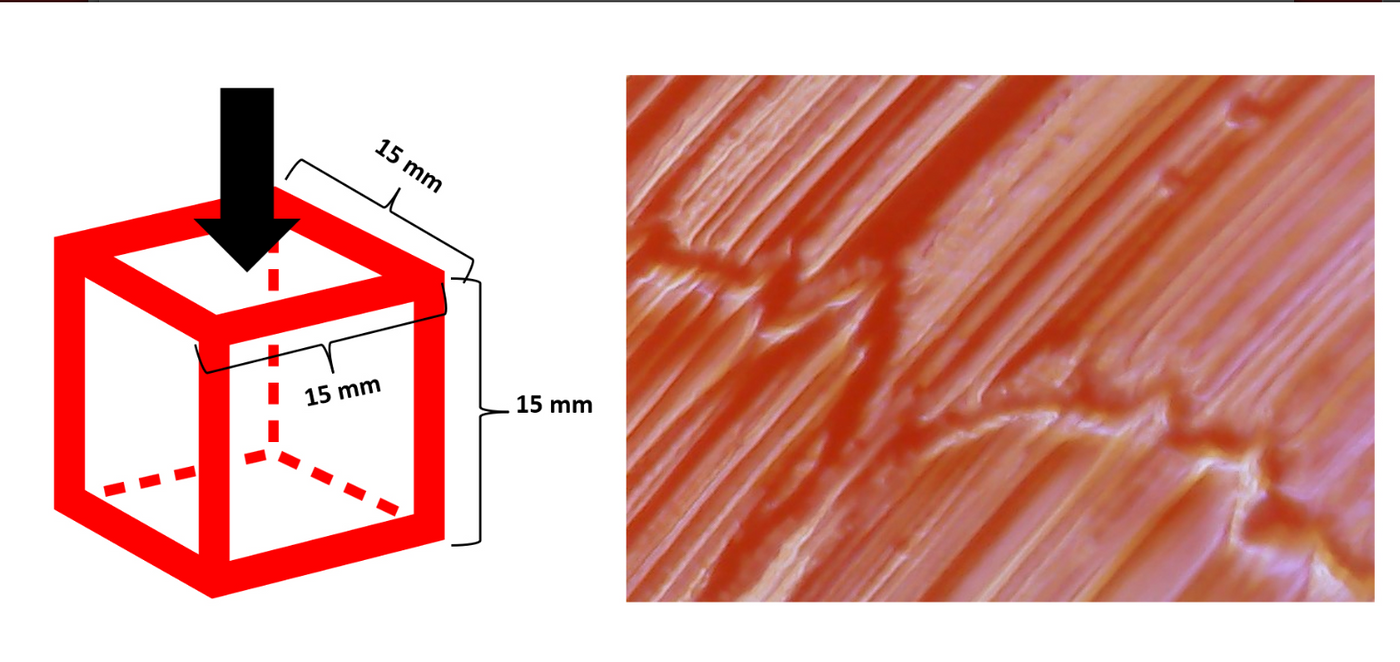Molecular Structure of Gummy Candy Unlocks Better Shelf Life
We all love soft, gummy candy. But, after sitting out for a while they lose their gumminess and harden, making it more difficult to chew and consume. But what if these same candies had longer shelf lives so we wouldn’t have to worry about them hardening over time?
Diagram of gummy candy (left) and a microscopic image of commercial gummy candy taken at 1000x magnification with a Cainda digital microscope 1000× Hui (Frankfurt, Germany). (Credit: Suzan Tireki)
This is what a recent study published in Physics of Fluids hoped to addressed as a team of researchers examined how manipulating the molecular structure of gummy candy can improve their shelf life, making them more desirable for long-term consumption.
For the study, the researchers analyzed how altering the primary components of the gummy-making process impacts the final candy product, including how the candies responded to being stored in various temperatures.
“A high number of parameters was the main challenge in our study,” said Dr. Suzan Tireki, who is an associate professor in food technology and product development at Özyeğin University, and lead author on the study. “We had eight different candy formulations, four different temperature conditions, and two different storage times. Another challenge was to try to find a common model for all these eight formulations, as each of them behaved differently.”
To predict the outcome of each candy product, the researchers used models to input all the variables, including the distances between the molecular bonds in the candies.
“The most innovative part of our study was investigating the texture of the gummy candies by estimating the average crosslink distances using the hardness data coming from texture profile analysis,” Tireki said.
The researchers found that the pH and moisture content of the candies greatly relied on the glucose (sugar) sucrose-to-syrup ratio. In contrast, the molecular bond distances were impacted by the gelatin content of the candies.
“Our most surprising finding was that hardness and average crosslink distance were not affected by the amount of starch,” Tireki said.
The goal of this study was to find the most suitable combinations for gummy candies to both improve the quality of the candies while improving their shelf lives in a myriad of environments throughout the food industry.
For the next steps, the team will be examining how mold shapes, packaging types, and plant-based formulations will impact the final candy product, as well.
Sources: Simply Sweet, Physics of Fluids, EurekAlert!
As always, keep doing science & keep looking up!









